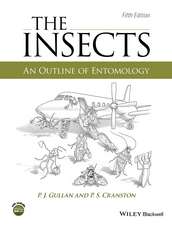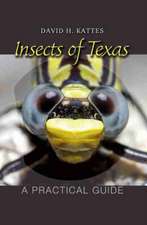Insect Biochemistry: Outline Studies in Biology
Autor H. H. Reesen Limba Engleză Paperback – 26 mai 1977
Din seria Outline Studies in Biology
-
 Preț: 375.07 lei
Preț: 375.07 lei -
 Preț: 375.07 lei
Preț: 375.07 lei -
 Preț: 375.62 lei
Preț: 375.62 lei -
 Preț: 375.07 lei
Preț: 375.07 lei -
 Preț: 375.62 lei
Preț: 375.62 lei -
 Preț: 375.62 lei
Preț: 375.62 lei -
 Preț: 375.07 lei
Preț: 375.07 lei -
 Preț: 375.84 lei
Preț: 375.84 lei -
 Preț: 375.84 lei
Preț: 375.84 lei -
 Preț: 375.07 lei
Preț: 375.07 lei -
 Preț: 375.45 lei
Preț: 375.45 lei -
 Preț: 375.07 lei
Preț: 375.07 lei - 15%
 Preț: 637.28 lei
Preț: 637.28 lei -
 Preț: 375.84 lei
Preț: 375.84 lei -
 Preț: 375.62 lei
Preț: 375.62 lei - 5%
 Preț: 357.23 lei
Preț: 357.23 lei -
 Preț: 375.45 lei
Preț: 375.45 lei -
 Preț: 375.07 lei
Preț: 375.07 lei
Preț: 375.62 lei
Nou
Puncte Express: 563
Preț estimativ în valută:
71.90€ • 78.12$ • 60.43£
71.90€ • 78.12$ • 60.43£
Carte tipărită la comandă
Livrare economică 21 aprilie-05 mai
Preluare comenzi: 021 569.72.76
Specificații
ISBN-13: 9780412131301
ISBN-10: 0412131307
Pagini: 64
Ilustrații: 64 p. 2 illus.
Dimensiuni: 170 x 244 x 4 mm
Greutate: 0.12 kg
Ediția:1977
Editura: SPRINGER NETHERLANDS
Colecția Springer
Seria Outline Studies in Biology
Locul publicării:Dordrecht, Netherlands
ISBN-10: 0412131307
Pagini: 64
Ilustrații: 64 p. 2 illus.
Dimensiuni: 170 x 244 x 4 mm
Greutate: 0.12 kg
Ediția:1977
Editura: SPRINGER NETHERLANDS
Colecția Springer
Seria Outline Studies in Biology
Locul publicării:Dordrecht, Netherlands
Public țintă
ResearchCuprins
1 Introduction.- 1.1 Growth and development.- 2 Distinctive features of metabolism and homeostasis.- 2.1 Digestion and absorption.- 2.2 The flight muscle.- 2.3 Carbohydrate metabolism.- 2.4 Lipid metabolism.- 2.5 Nitrogen metabolism.- 2.6 Haemolymph.- 2.7 The integument.- 2.8 Microsomal oxidations and insecticide resistance.- 2.9 Chemical control mechanisms: neurohormones and cyclic nucleotides.- References.- 3 Hormonal control of development.- 3.1 Endocrine control of moulting and metamorphosis.- 3.2 Determination and differentiation.- 3.3 Moulting hormones.- 3.4 Juvenile hormones.- 3.5 Biochemical mode of action of ecdysones.- 3.6 Biochemical mode of action of juvenile hormones.- Summary.- References.- 4 Insects and the external environment: pheromones and defensive substances.- 4.1 Pheromones.- 4.2 Defensive chemistry.- References.- 5 New approaches to insect control.- References.











